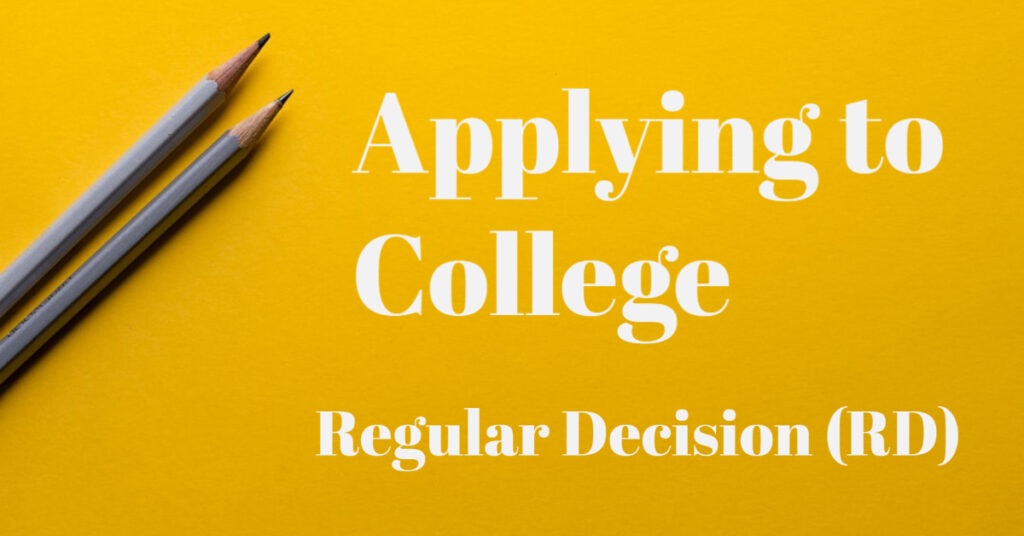
The majority of students submit their college application for Regular Decision. Students can apply to as many colleges as they choose for Regular Decision, keeping in mind that each application adds to the overall workload and application fees to multiple colleges can be costly. Don’t sacrifice quality for quantity in the application process.
Every school you apply to will have Regular Decision as an option. Students applying RD will generally turn in their applications between mid-December through mid-January and hear back regarding their admissions status by March or April. Although the majority of schools set January 1st as their RD deadline, many other schools will have you turn in your application on January 15th, February 1st, or even at an earlier date, such as December 1. Because of the varying deadlines, it’s important to keep track of each college’s deadline.
One of the greatest detriments to applying Regular Decision is waiting to hear back from the college until March or April. Your friends may have applied ED or EA and you will still be unsure of where you are going to college. Waiting is hard, but if you were undecided when you he , you have had that extra time to make up your mind. This will help since the May 1 decision deadline will be close to the time you hear back from the colleges.
Another downside would be that your student will be part of a large applicant pool and standing out is critical. Be sure he or she is at the top of the applicant pool (you can check applicant stats on College Navigator or College Data) so they will rise to the top.
Why should your student apply Regular Decision?
There are several reasons why a student may opt to apply Regular Decision. Here are just a few:
If your student’s grades need improvement
Grades are a crucial part of your student’s application. A strong GPA junior year will ensure your student is competitive with other applicants. If he struggled during junior year, applying RD gives him the opportunity to show an upward trend in his grades during the fall semester which will bode favorably with admissions. Those extra few months could push him over the top in the applicant pool.
If your student hasn’t had time (or the opportunity) to visit
Applying to a college without visiting could be a waste of time. Although many campuses have squelched actual visits, students should make an effort to at least set foot on campus. If the college is open for visits, it’s a good way to demonstrate interest. In-person visits are a good way to get a “feel” for the campus and students. Many colleges have been crossed off the list simply because they just didn’t “feel” right.
If your student hasn’t started on their application
The college application requires time and effort. Waiting until the week before the ED or EA deadline is a bad idea. Rather than rushing to get the application in, it’s better to wait and dedicate the time to submitting a stellar application that will stand out among applicants.
If your student isn’t 100% sure of their top-choice
Applying RD gives your student time to consider all aspects of each college is they aren’t completely sure of where they want to attend. ED and EA applications are usually reserved for the student who has already made their college choice and wants to get into their top choice school.
If your student needs financial aid
Applying EA and RD allows your student to compare financial aid offers. As the offers of admission come in, so will the financial aid package. You and your student can take the time to evaluate the offers and choose the college that is the best financial fit. Applying ED locks you into a decision and if the financial aid is insufficient, your decision is binding. It may force you into taking on more debt than you are comfortable with.
